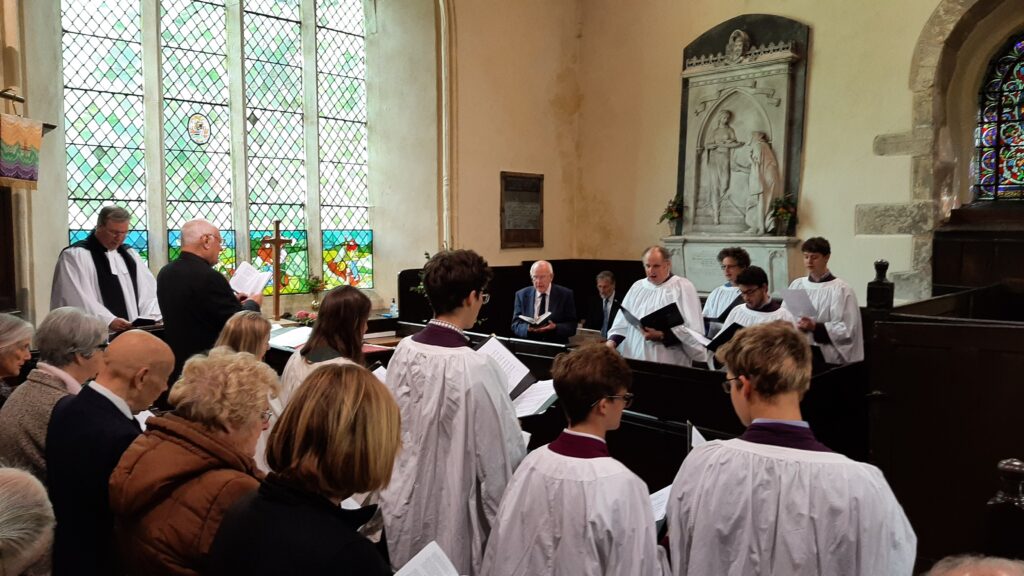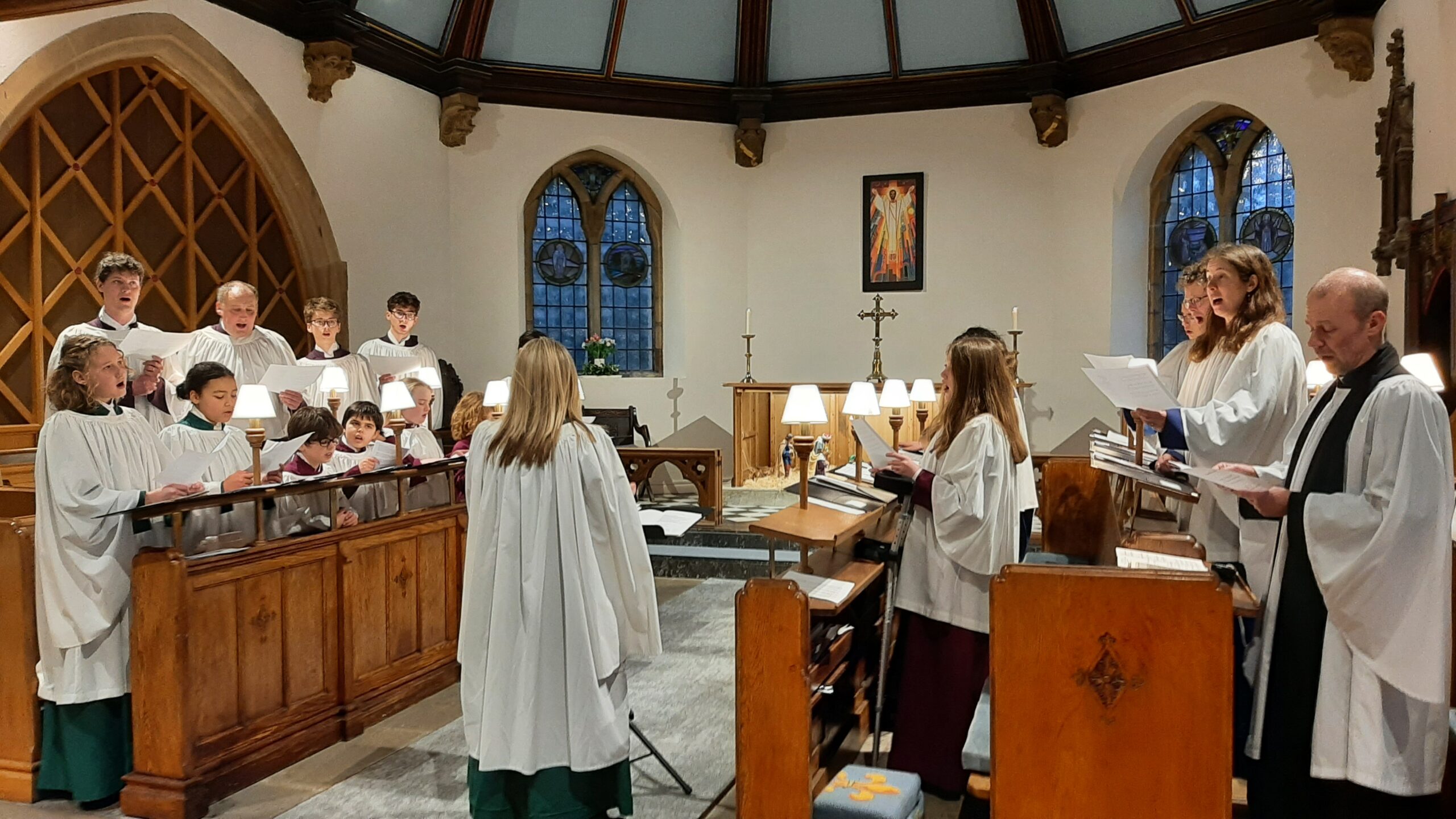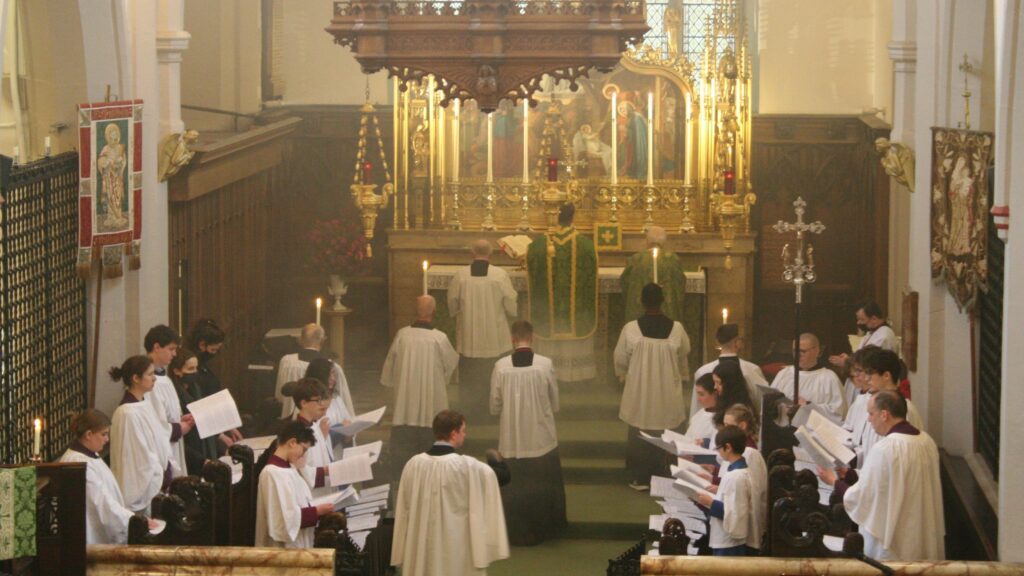Choral Evensong
An inclusive and contemplative choral service to end the day.
“Choral Evensong encapsulates much of what I think the Church ought to be doing in response to the spiritual needs of the world. Its timeless liturgy is a genuine ‘space creator’; a liminal environment in which people are offered the opportunity to find peace and stillness and perhaps even a spiritual encounter that they may not have known they were looking for.”
Revd Matt Wood, Curate in Charge, Parish of Abbeydale and Millhouses
“It was wonderful to welcome the Steel City Choristers to St Mary’s Ecclesfield. The choir were marvellous! It was such a special service as it is probably thirty or forty years since Choral Evensong was last sung at St Mary’s”
Revd Tim Gill, Vicar, St Mary’s Ecclesfield

What is Evensong?
Evensong is a short service traditionally held towards the end of the day in which music, readings and prayers create a space for reflection. Most of the service is sung by the choir, making it an inclusive space in which everyone is welcome to enjoy the beauty and power of the liturgy and music and find time for their own thoughts and contemplation, encountering God beyond words. It is a sensory experience that helps us express our own prayers in a profound way.
Over the centuries the service of Evensong, with its rich choral content, has inspired music from many of the finest composers and continues to do so today. Please contact us if you’d like to talk about us coming to sing Evensong at your church.

The history of Evensong
The service of Evensong dates back to the Reformation when, in 1549, elements of even older traditions were brought together to create a new service in the first edition of the Book of Common Prayer. Within a few decades, composers such as William Byrd and Thomas Tallis were writing wonderful new music especially for the service of Evensong, inspiring the 500 year-old tradition of English Choral Music that Steel City Choristers aims to preserve and promote in and around Sheffield.
The structure and liturgy of Evensong were designed specifically to make church more accessible to the general public. It condensed material from several services into one short 45 minute service. It was conducted in English rather than Latin, and included both a New and Old Testament reading to help people get to know the Scriptures.
Evensong continues to be an inclusive and attractive service that, across the country, is bucking the general trend of declining church attendance.

The format of Evensong
The service of Evensong follows a set format, including:
- Liturgical words of introduction and prayer from the Book of Common Prayer
- Preces and Responses in which a single voice and the choir sing a call and response form of prayer
- The Psalm for the day, sung by the choir to a musical chant, often in four-part harmony
- The Magnificat, Mary’s exclamation of joy at knowing she would be the mother of Jesus
- Readings from the Old and New Testaments
- The Nunc Dimittis, the words of the old man Simeon who knew he could die in peace having met the infant Christ
- An anthem specially chosen for the day
- Hymns for everyone to sing together.
Exploring the stories behind the music
Steel City Choristers is open to children and adult singers of all faiths and none. Without advocating Christian belief, we help our choristers to understand the role their music plays in worship as well as the meaning of the pieces they sing.
We sing many different musical settings of the Magnificat and Nunc Dimittis, but the words are always the same. They tell the stories of Mary being chosen to carry Jesus, and Simeon being happy to see the Messiah before he dies: stories of God raising up the poor and vulnerable, and of peace of mind in the face of mortality.
Subversive lyrics such as “He hath put down the mighty from their seat” led to the British banning The Magnificat from being sung at Evensong in India in the 19th century! In contrast, we want to open up conversation about the words and music we sing, and explore the relevance of the choral tradition to our lives today.
We use OutoftheBox stories to help explore the stories the music tells, and to create a safe space for people to wonder, play and make meaning. We also use OutoftheBox stories to help create an attentive atmosphere for listening to music appreciatively and enjoying relevant works of art.
